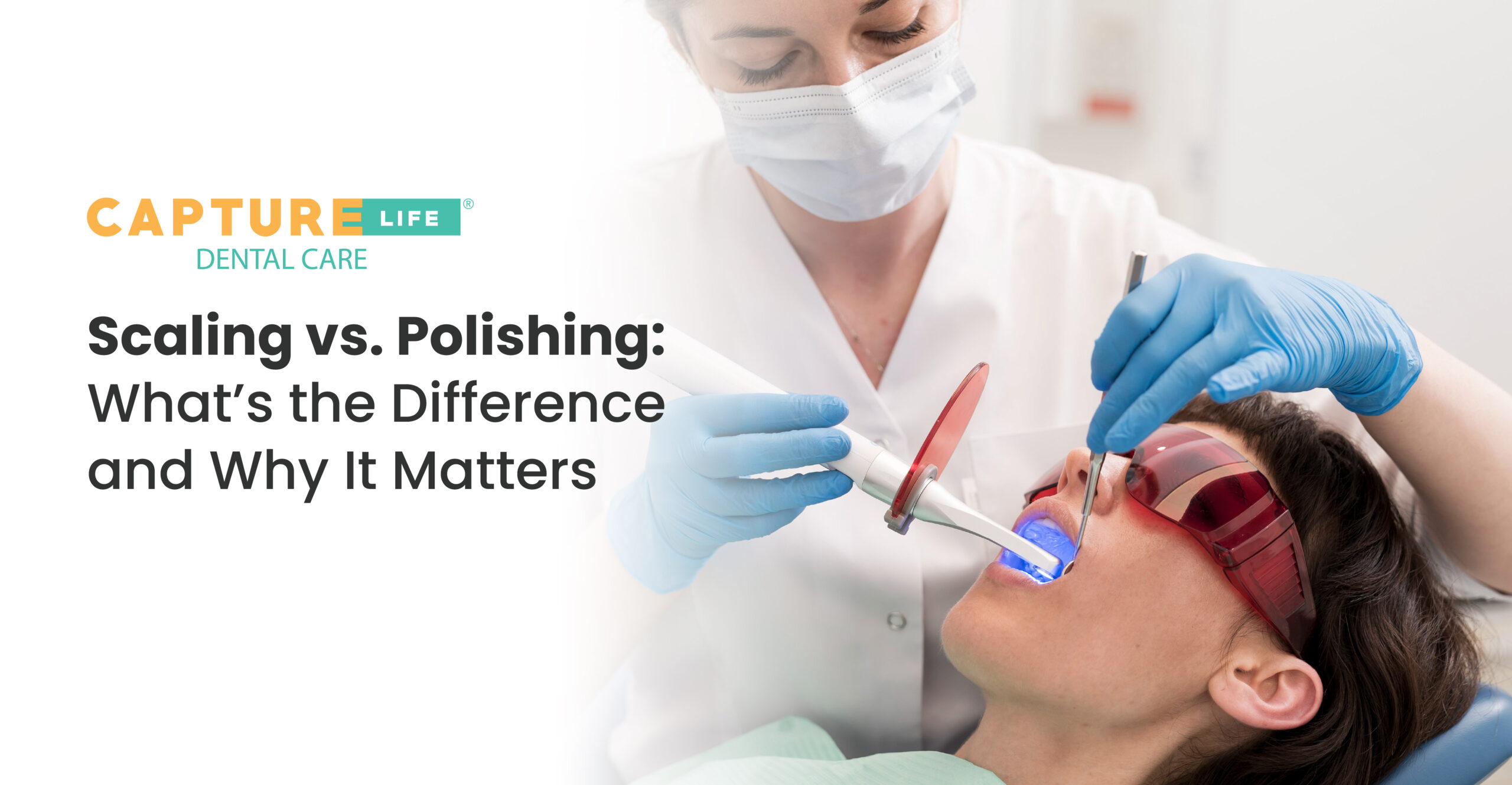
27 Oct Scaling vs Polishing: What’s the Difference and Why It Matters
Every smile deserves more than just brushing and flossing. When it comes to professional dental maintenance, two key procedures stand out: scaling and polishing. At the core of strong oral care, excellent dental care, and consistent oral hygiene, knowing what each method does and how it affects your teeth care can make all the difference.
What Is Scaling?
Scaling is the process by which hardened plaque (calculus or tartar) and soft deposits are removed from the crown and root surfaces of teeth. It’s a deeper cleaning than routine brushing, designed to eliminate irritants that contribute to gum inflammation and disease. Studies show scaling lowers calculus levels significantly, especially in adults without severe periodontitis.
What Is Polishing?
Polishing follows scaling and involves smoothing the tooth surface with a rubber cup and polishing paste, removing extrinsic stains and creating a surface less favourable to plaque accumulation. A recent randomized trial found scaling + polishing resulted in statistically better outcomes for plaque, gingival and calculus index scores compared with scaling alone over a three-week period.
Why The Distinction Matters for Oral Hygiene
Though both procedures contribute to cleaning, their impact differs. A systematic review concluded that for adults without serious gum disease, routine scale and polish at six- or twelve-monthly intervals made little or no difference to gingivitis or probing depths when compared with no scheduled treatment.
However, when polishing is added immediately after scaling, the data suggest better short-term control of plaque and smoother surfaces, which supports improved oral hygiene and teeth care. Choosing the right combination and timing becomes part of effective dental care, especially in specialised clinics.
When Your Dental Specialist in Banjara Hills Recommends One or Both
At leading dental clinics, such as ours, your dental specialist in Banjara Hills assesses factors like gum health, calculus levels, patient risk, and time since last cleaning. For patients with moderate build-up and good daily hygiene, scaling alone might suffice. For those with heavier deposits, staining, or risk factors (for example, smoking, diabetes, irregular cleaning), scaling followed by polishing offers a stronger preventive strategy.
Practical Guidance for Patients
- Maintain twice-daily brushing and daily flossing; professional procedures supplement, not replace, your home routine.
- Ask your dentist whether your last cleaning involved both scaling and polishing, this may affect how soon you should return.
- If you notice staining, rough tooth surfaces, or feel ‘scratchy’ areas, mention this, polishing might be beneficial.
- For optimal teeth care, combine professional cleanings with disciplined oral hygiene habits and follow-up visits at trusted dental clinics.
Conclusion
In the realm of dental care, scaling and polishing are distinct yet complementary procedures. Scaling removes harmful deposits and sets the stage. Polishing smooths and refines the surface for enhanced oral hygiene and long-term teeth care. If you’re looking for personalised advice on cleaning intervals, ask a dedicated dental specialist in Banjara Hills about the best plan for your smile.
Visit Capture Life Dental Care to book your cleaning and ensure your oral health stays ahead of the curve.

